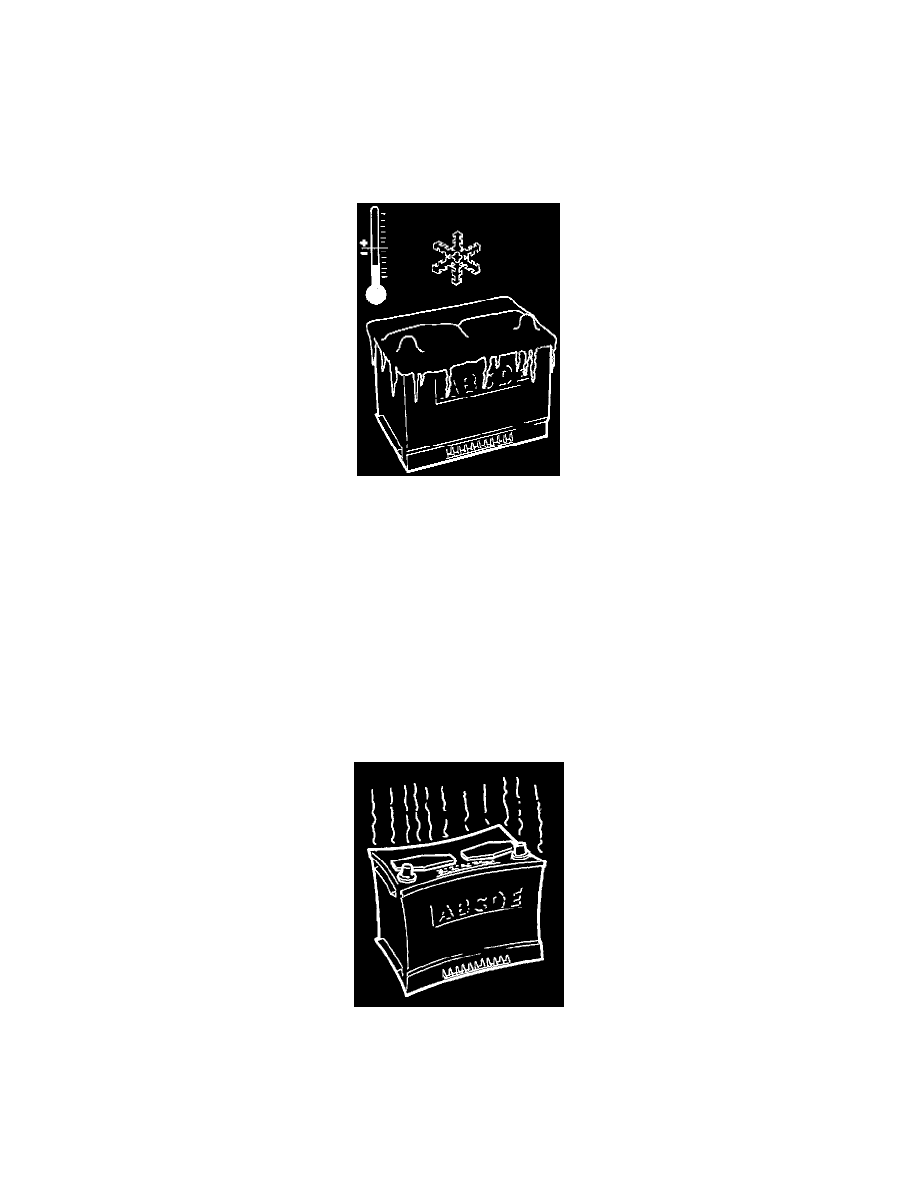Battery Component Information - Technical Service Bulletins

The capacity of a battery is given in ampere hours (Ah) and usually applies to a battery discharged at 25 °C for 20 hours to a final voltage of (10.5 V).
The capacity of a battery is not constant and depends upon specific gravity, temperature, discharging current, the age of the battery and the charging
time.
E.g.
A battery rated as having a capacity of 70 Ah would provide a discharge current of max. 3.5 A (3.5 x 20h =70 Ah) during 20 hours at 25 °C. A low
discharge current i.e. a long discharge time, provides more Ah than if the discharge current is high for a short period of time.
Freezing
Differences in capacity at +20 °C and -18 °C
Temperature
+20 °C
-18 °C
Capacity
100 %
55 %
70 %
35 %
40 %
25 %
Freezing point of battery in relation to specific gravity
State of charge
Specific gravity
Freezing point
Discharged
1.12
-10 °C
Half-charged
1.21
-27 °C
Fully-charged
1.28
-65 °C
The porous plates in a battery expand somewhat during discharge. If the discharge takes place during a long period of time, a greater area of the porous
plates will be affected and the resulting expansion may cause the plates to misform or split.
Apart from this, large insoluble crystals of lead sulphate are formed at the negative plates. This reduces the effective surface of the plates and the
capacity of the battery is reduced. If sulphation has just started then it may be possible to renew the plates by means of a long slow charge.
